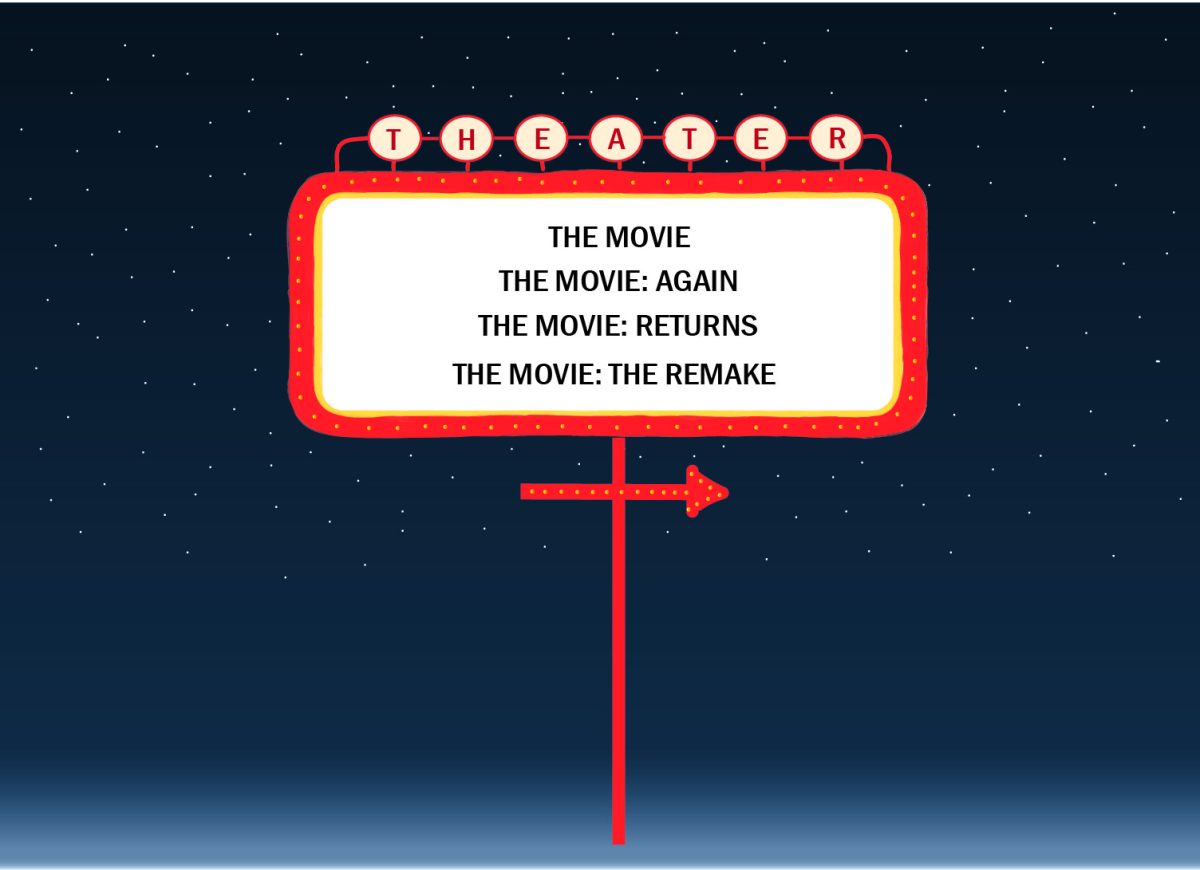It’s often said that history repeats itself. In recent years, it has become evident that the American film industry does too. Remakes and sequels stream into theaters, leaving viewers hungry for something new.
With remakes and sequels like “Beauty and the Beast,” “Fast X,” and “The Meg 2: The Trench” debuting on the big screen, movie fanatics are left longing for something new. Even more, “The Little Mermaid,” “Aladdin,” and “The Lion King” have returned as live-action remakes.
Most of these movies have one factor in common, they retell the original animated films, with the inclusion of a few changes to satisfy modern standards. In response, many filmgoers assert that these live-action remakes tend to feel like “cash grabs” that mainly prey on the nostalgia induced by these films.
These assertions are both understandable and reasonable. The films lack innovation and originality as these “new” films do not evolve from the original movie. Oftentimes, they rely on familiarized and developed worlds from preceding movies and include the same characters. This is proof of creative stagnation: a state of limited creativity when there is little to no development or evolution, resulting in the usage of established patterns or concepts, which hinders the development of new and unique ideas or stories.
For instance, the original animated “Aladdin” shares many similarities with its live-action counterpart. Despite the few changes, such as Princess Jasmine receiving a more prominent role and challenging the fictional world of Agrabah’s gender roles, the films follow the same storyline of a young Aladdin finding a genie lamp that results in him receiving three wishes, which he uses in an attempt to win the heart of Princess Jasmine and defeat the sorcerer, Jafar. Furthermore, they also share the same songs, settings, and main characters.
Moreover, nine out of 10 movies from IMDB’s list of the highest-grossing films each year were sequels or remakes from the past decade. Beginning with “Frozen,” in 2013, the highest-growing films were “Transformers: Age of Extinction,” “Star Wars: Episode VII- The Force Awakens,” “Captain America: Civil War,” “Star Wars: Episode VIII- The Last Jedi,” “Avengers: Infinity War,” “Avengers: Endgame,” “Demon Slayer the Movie: Mugen Train,” “Spider-Man: No Way Home,” and “Avatar: The Way of Water.”
Even among these 10, “Star Wars: Episode VIII-The Last Jedi” is a sequel to “Star Wars: Episode VII- The Force Awakens,” while “Avengers: Endgame” is a sequel to “Avengers: Infinity War” and “Demon Slayer the Movie: Mugen Train” is a remake of its anime counterpart. Ultimately, the list displays how the presence of new and original storytelling has diminished.
Although the films signify a period of creative stagnation, they can still be exciting and enjoyable to watch, as made apparent through their status as the highest-grossing films and the high ratings of several movies. The films add more depth and continue well-known storylines, but the fact remains that they do not truly introduce new stories or ideas.
Why is this happening? Why do these sequels and remakes continue to be well-known and highly profitable?
One explanation could be that these films are primarily produced by major film studios, such as Disney, Universal Pictures, and Warner Bros, which have a dominant presence in the American film industry due to their abundant resources and large market shares. These characteristics allow them to continuously outcompete smaller film studios, further stifling creativity and innovation, as the smaller studios, which likely have newer and more creative ideas, will struggle to build an audience.
Regardless of the recent stagnation and abundance of sequels and remakes, the industry has some hope as creative and innovative films continue to make their way to the big screen. A24, a smaller indie film studio, distributed “Everything Everywhere All at Once,” a movie that performed well at the box office and received high ratings. Even in larger film studios, some creative films, such as Disney’s “Encanto” and Warner Bros.’ “Barbie” have emerged in recent years.
There is still much work to be done if the American film industry wants to move forward from its creative stagnation.






















